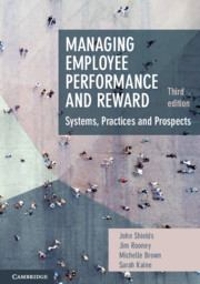4 What are the main shortcomings of the existing approach to performance-related rewards and what changes would
Question:
4 What are the main shortcomings of the existing approach to performance-related rewards and what changes would you recommend? Three weeks into her new job as Chief Human Resources Officer at Wealth Bank Corporation (WBC) things have yet to start looking up for 30-something high-flyer Amy Wang. The enormity of the challenge she faces in redesigning performance and rewards for the 8,000 staff and 300 remaining branches in Wealth Bank’s nationwide retail and wealth management divisions seems to loom larger by the day. Since her appointment, Amy has held daily crisis talks with her new boss – and the bank’s new CEO – Ananya Singh, about the systemic crisis in the retail and financial planning divisions and how it can be addressed.
The challenge they face is enormous. WBC executives have been grilled repeatedly by lawyers at the Royal Commission of Inquiry into the Financial Services Industry for the past six months, the media is awash with allegations of unethical sales practices by the bank’s financial advisors, ten employees have been charged with fraud, and customers are deserting in droves and threatening class action for losses and damages arising from deceptive and misleading conduct by the bank’s financial advisors. And it gets worse. Institutional investors have dumped WBC shares, staff morale has plummeted, and the Financial Services Union is planning to make performance and reward practices a key issue in the next round of enterprise agreement negotiations. At the heart of these problems lies the Sales Incentive Scheme (SIS) introduced two and a half years ago amid much fanfare by Amy’s predecessor, Atilla Hardman.
Step by Step Answer:

Managing Employee Performance And Reward Systems, Practices And Prospects
ISBN: 9781108701044
3rd Edition
Authors: John Shields, Jim Rooney






